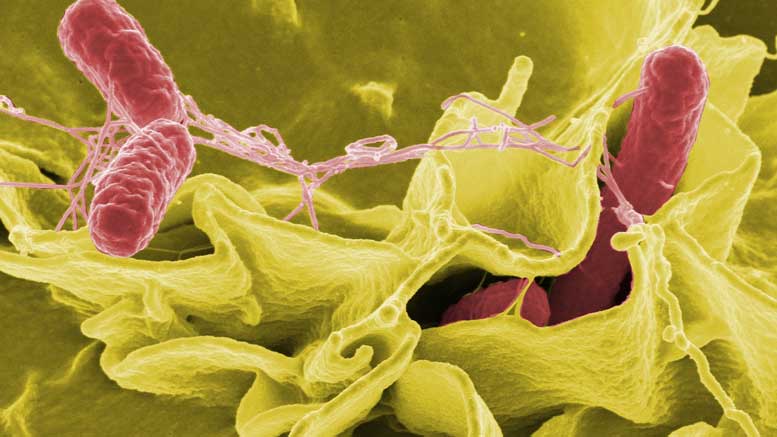|
Click to listen to this article
|
By Joy Waite-Cusic, Oregon State University

In response to the recent Salmonella and E. coli O157:H7 outbreaks linked to onions, packinghouses are under increasing pressure from regulators and buyers to enhance their cleaning and sanitizing procedures. Introducing water into these dry packing facilities would only create more microbial problems. The use of alcohol-based “dry” sanitizers is a potential option for sanitizing food contact surfaces without introducing significant water to the facility. However, little data existed on the efficacy of these alcohol-based sanitizers against foodborne pathogens on relevant surface types.
Oregon State University researchers Joy Waite-Cusic, Stuart Reitz and Jovana Kovacevic received a Washington State Specialty Crop Block Grant to evaluate the efficacy of commercial alcohol-based sanitizers to inactivate Salmonella and E. coli on plastic, wood and conveyor belt surfaces found in packinghouses. Laboratory experiments conducted by graduate student Sasha Nerney demonstrated that sanitizer solutions with alcohol concentrations near 60% were effective at killing bacteria (>5-log reduction) on plastic surfaces when there was sufficient wet contact and drying time. These sanitizers were significantly less effective on conveyor belts and plywood.

Sanitizer tests were also performed on plastic and wooden harvest bins to evaluate their ability to reduce cross-contamination between lots of onions. High alcohol concentration sanitizers were effective at reducing onion cross-contamination rates in both types of harvest bins. Shockingly, the low alcohol concentration (11% isopropyl) sanitizer increased cross-contamination rates, likely due to the spreading of bacteria from discrete locations to a larger area of the bin.
The results of these studies were published in the Journal of Food Protection in February 2025. The OSU research team translated these research findings into a hands-on Dry Cleaning and Sanitizing Workshop that was offered to the onion industry in Othello, Washington, in January 2025 and in Ontario, Oregon, in April 2025.
The next steps in this research are to use this data along with microbial transfer data collected by OSU and University of California, Davis to build a quantitative microbial risk assessment (QMRA) model to evaluate the impact of sanitizer implementation at commercial scale. Model development is being led by Waite-Cusic’s Ph.D. student, Andrea Domen, with support from QMRA expert Don Schaffner (Rutgers University) and statistical modeling experts James Molyneux and Claudio Fuentes (OSU). This QMRA model will serve as the foundation for an interactive web-based Shiny application that can be used by the industry to quantify contamination risks with and without sanitizer interventions. This application will be introduced to the industry via a training webinar in late 2025.

